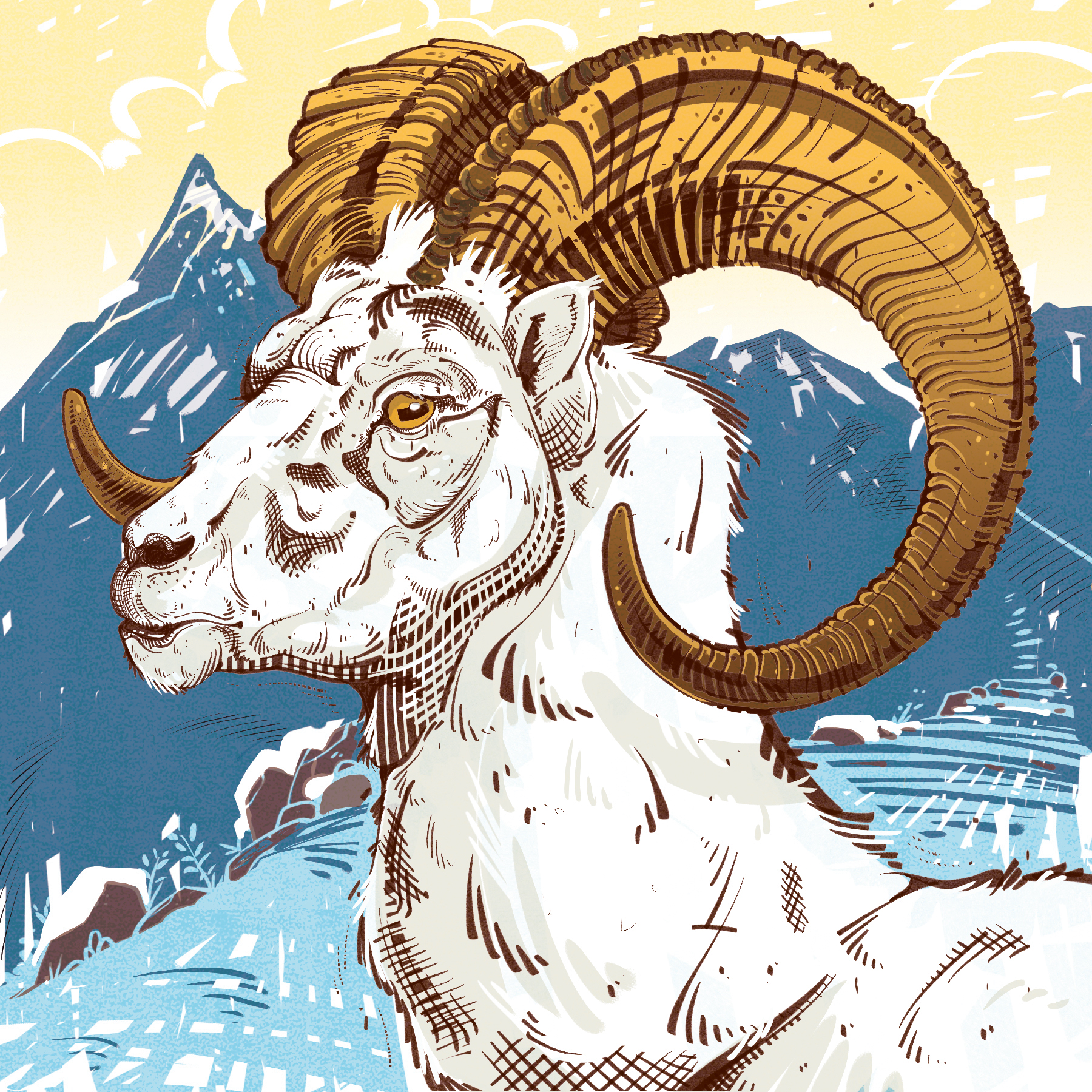For dedicated mountain sheep hunters, BC is a dream location and home to four kinds of wild sheep, including two species (thinhorns and bighorns) and two subspecies of each. Thinhorn sheep are found in northern BC, while bighorns are at home in the southern BC mountains. All are medium-sized ungulates with stocky bodies. An average thinhorn ram weighs 80 kilograms, around a third less than a bighorn ram. Mountain sheep ewes are about half the weight of the rams.
Advertisement

Thinhorn sheep (Ovis dalli) are so named because, while their horns are big, they are less massive than the bigger horns of the bighorns. Thinhorn sheep are found in the mountains of the northern third of BC, plus Alaska, Yukon and NWT. There are two subspecies, Dall’s sheep (Ovis dalli dalli), named for Alaska explorer W.H. Dall, and Stone’s sheep (Ovis dalli stonei), named after Montana naturalist A.J. Stone. The two subspecies are distinct, Dall’s sheep are basically all white and Stone’s sheep have a mostly brown coat. Their ranges overlap in Yukon and interbreeding creates “piebald” animals called Fannin sheep, which are sometimes considered a separate subspecies. This dramatic difference in coat colours has had several theories, but recent genetic analysis may have settled the issue. During the periodic ice ages of the past half million years or so, sea levels fell substantially, exposing land that is now under water. Beringia was a vast expanse of grassland where Bering Strait is now, and it included western Alaska and eastern Siberia. Dall’s sheep survived the ice ages here and on some of ice-free mountain tops. Stone’s sheep apparently took a different route, moving south, ahead of the advancing ice sheet. At some point they encountered, and bred with, bighorn sheep and acquired a brown coat. As the ice age ended and the glaciers retreated, Stone’s sheep returned to the north, recolonized their current range, but they maintained their “imported” coat colour, as well as slightly larger bodies and horns than Dall’s sheep.
Recently, disease and habitat loss has impacted BC’s bighorn sheep numbers, but fortunately for sheep hunters, thinhorn sheep populations are healthy and stable. About 80 per cent of the world’s 15,000 Stone’s sheep are found in BC, while most of the 100,000 Dall’s sheep are found in Alaska and Yukon. There are about 500 Dall’s sheep in the very northwest corner of BC.
Advertisement
The horns of the Bovidae family, including mountain sheep, are permanently attached to their skulls, not shed annually as is the headgear of males of the deer (Cervidae) family. Thinhorn rams’ horns sweep up, back, down and forward, flaring outward, so that by age six or seven the horns may make a full curl and measure up to a metre from base to tip. Ewes’ horns have a similar construction to the rams, but are much smaller, more slender and gently curving, typically 25 to 30 centimetres long. Yearling ram horns look similar to the ewes’. The horns of both sexes consist of two parts – a bone core and an outer sheath of a tough protein called keratin. Both parts grow continuously throughout the animal’s life. The skin cells around the base of the horn produce the keratin, which pushes up under the existing sheath, so the horn construction somewhat resembles a stack of ice cream cones. Horn growth slows during winter and these interruptions show as distinctive rings, and that can be useful in determining the age of the animal. However, growth interruptions can also be the result of illness or poor nutrition and even the typical horn growth produces a rough outer surface with numerous ridges and smaller rings, so accurate aging can be a challenge.
Horns are so important in mountain sheep society that those of a mature ram weigh more than all of the bones in his body. The ram’s horns are used mainly for attracting ewes and eliminating rivals during the late fall mating season. Thinhorn sheep are polygamous, one ram will mate with several ewes. However, the breeding ram is not a random selection, but the one with the most impressive horns. Two unequally matched males seldom fight, the junior animal backs down when faced with the bigger ram’s superior weaponry. However, two nearly equally matched rams will battle for the right to breed by crashing their heads together in vigorous combat until one concedes defeat, and the victor is the monarch of that part of the mountain.
Advertisement